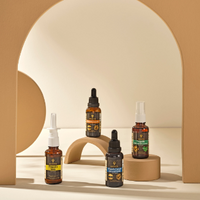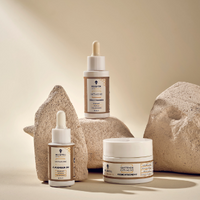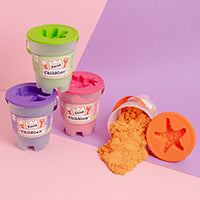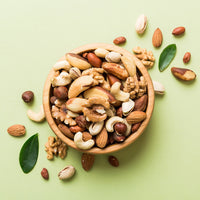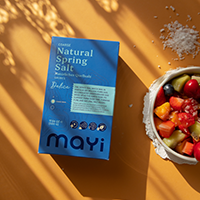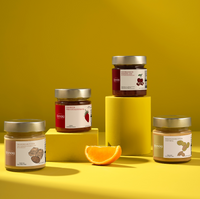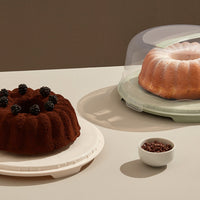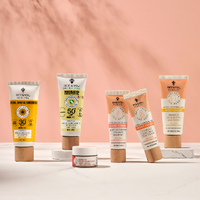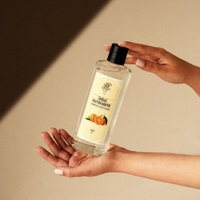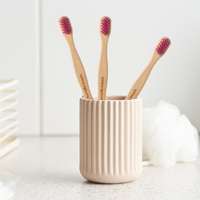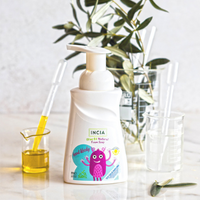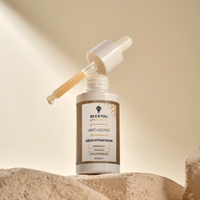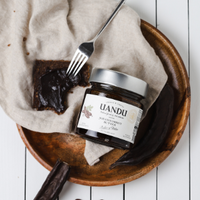CAROB: MEDITERRANEAN SUPERFOOD
It is believed that the carob tree comes from the Mediterranean and the Near East region. Even today it still grows there and has great culinary importance and tradition.

The carob tree
When you see the carob tree fruit for the first time, you will not necessarily feel attracted. The carob tree can grow up to 20 m tall, the fruit of which looks like a pod with a hard and dark brown pod. It is an evergreen tree and is very heat and drought tolerant.
The strong trunk with its spread branches forms a sprawling, hemispherical crown. Inside the pod is reddish to light brown flesh with small black-brown seeds. Externally, the fruits are initially greenish and then purplish-brown, shiny and flattened when ripe. They can grow up to 10 to 30 cm long, 1.5 to 3.5 cm wide and about 1 cm thick. The seeds of the fruit weigh almost evenly and have a weight of 0.18 g (1 carat = 0.2 g). In the past they were used as weights in pharmacies and jewellers. Harvest Time/Season of Harvest: Carob harvest begins in September and lasts approximately 4 to 6 weeks

The taste of carob and the nutritional value
Carob tastes slightly bitter and at the same time has a very sweet and somewhat liquorice-like taste. The fruits of carob contain a large amount of minerals, especially iron and vitamin B and vitamin A.
The superfood is rich in antioxidants and nutrients and offers protection against free radicals. A quantity of 100g contains 222g calories, 4.6g protein, 0mg cholesterol, 0.7g (saturated fat 0.1g, monosaturated fat 0.2g, polyunsaturated fat 0.2g), 89g carbohydrates (fiber 40g, sugars 49g), 35 mg sodium, 827 mg potassium, 2.9 mg iron, 54 mg magnesium, 348 mg calcium, 14 IU vitamin A, 0.4 mg vitamin B6 and 0.2 mg vitamin C.

Carob versus chocolate/cocoa
Compared to chocolate and cocoa, carob has many advantages:
- Contains fewer calories and fat, but is high in protein and fiber. These are not contained in chocolate and cocoa, but much more fat.
- Is a good source of calcium that promotes healthy bones and teeth and has twice the calcium content of cocoa.
- Contains no substances that could trigger migraines.
- Lowers cholesterol with the fiber it contains. These increase the good cholesterol and promote a high density of lipoproteins.
- Slows down the overproduction of the appetite-stimulating hormone ghrelin and thus prevents the absorption of too many nutrients.
- Is caffeine and gluten free.
- Contains oxalic acid, which prevents calcium absorption.
- May trigger migraines in some people.
- Has high sodium and fat content.
What ailments are alleviated with carob?
The areas of application of carob;
The areas of application of Carob are diverse. For example, it can be used
- Against diarrhea
- Against cough and asthma
- For stomach and intestinal problems
- Against intestinal infections
- For liver detoxification
- Against osteoporosis
- To lower cholesterol
- For complaints with incontinence (carob flour)
- Against acid reflux
- Against flatulence
- For celiac disease
- Against uric acid and gout (carob flour)
- For constipation
The side effects of carob
Carob fruit appears to have no known side effects when taken orally as a food or drug for the majority of people. Undesirable side effects are not yet known.
The dosage of carob
For dosing when treating with carob products you should consider several factors. Among other things, the age and state of health of the consumer plays a role. There are no solid statements about an appropriate dosage of carob products. Our products contain appropriate dosage recommendations and can be found on the individual product page. Always follow the appropriate instructions on the product label and consult your pharmacist, doctor or other healthcare professional before use if you have a medical condition or are allergic to any known ingredients. However, the use of carob is otherwise considered to be largely harmless.
Häufig gestellte Fragen
Kann man Johannisbrot essen?
Wo wächst der Johannisbrotbaum?
Welche Johannisbrot-Produkte bietet UANDU an?
Wie wird die Johannisbrotfrucht genutzt?
Können Johannisbrot Produkte auch während der Schwangerschaft eingenommen werden?
Wieviel Zucker beinhaltet Johannisbrot?
Ist Johannisbrot gesund?
Führt der Verzehr von Johannisbrot Produkten zu Übergewicht?




